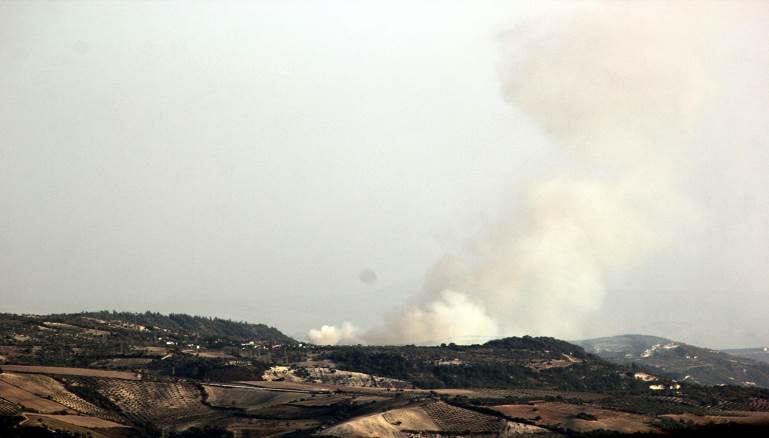It seems clear that the regime is tending away from high-scale mobilization for the Idleb battle, and is even seeking to hide the effects of the battle, although in an ineffective manner. This began with the arrival of 86 bodies to the military hospitals in the city of Lattakia between May 16-18, 2019. The regime did not deliver the bodies to their families and prevented families from entering the military hospitals, dispersing them by refusing to acknowledge in which hospitals the dead and wounded were placed. Hundreds of family members of casualties have had no choice but to gather before the military hospitals to put pressure on the regime to release the bodies. The ongoing pressure has pushed the regime to acknowledge the dead on the condition that no more than two bodies are released a day and that they are mourned at official events.
The security committee for Lattakia province has decided not to release any bodies unless all preparations are made to “preserve” the morale of the army and families.
The propaganda spread by the commander of the Tiger Forces, Suhail al-Hassan, and his media groups, has not managed to reassure Alawites with regards to the battle. The Tiger’s motivational video, which was widely published, includes cargo vehicles which more commonly used for transport rather than military use.
The number of wounded from the 44th Brigade has increased, and most of its fighters are from Lattakia city. This has spread fear among people about the war, counter to the propaganda message the regime has tried to spread.
Young Alawite men have refrained from going out into Lattakia’s streets since the start of the battle for Idleb out of fear of the hysterical levels of conscription to which the regime has resorted.
The regime has failed to mobilize and motivate the military it leads in Lattakia, such as the Baath Brigades and the Syrian Social Nationalist Party, gathering no more than 300 of their fighters for the Idleb battle.
Al-Modon’s sources said that most of those carrying arms for the Baath Party and receiving a salary are reluctant to fight on the frontlines. Even the groups included into the fighting militias in the Lattakia countryside have not been accepted or cooperated with by Suhail al-Hassan’s groups or the Iranian-led groups. The Russians only cooperate by air with the specific groups under their command.
Even the marginal media pages have completely stayed away from news of the battles, especially news of the opposition’s violent defense of the Lattakia countryside front. In general, residents are opposed to opening a front in the Jebel al-Akrud, asking the regime discreetly and openly to leave the front alone because it is not valuable. On the Alawite street, clear feelings prevail of not being interested in the battle, and even not participating in it to a provocative level. The Russians have asked Iranian officers, whose homes were hit by Israeli bombardment in the Hama countryside a few days ago, to head to the Lattakia front to join the battle.
It seems that the Idleb battle is necessary for the Iranians and Russians as well as some Syrians who are no longer clearly affiliated with regime figures such as Suhail al-Hassan. The regime has become isolated from the battle’s events. Still, the regime is trying to play the Iranian and Russian sides off one another and say that there is no popular satisfaction for the war even if it is not at the forefront. This became clear through the way the regime has sent dispersed military forces with different military affiliations and from various military bases to the frontlines, which have seen the heaviest fighting and losses.
This article was translated and edited by The Syrian Observer. Responsibility for the information and views set out in this article lies entirely with the author.


